Michael Levitt's Blog, page 137
January 27, 2019
Your Burnout Is NOT A Failure

Photo by Zohre Nemati on Unsplash
In the book “Burn-out” by Herbert Freudenberger, Dr. Freudenberger realized in his studies that burnout is robbing our society of high-achievers (both women and men) that society looks up to as leaders and action-takers.
I see many people that are burned out tend to be the Type-A personalities: driven, successful, but also not satisfied with their accomplishments ,so they keep chasing more and more.
This chasing leads to burnout. Burnout feelings often have a dulling and deadness feeling within. Things that used to excite us no longer do. We are often numb to the world.
Sound familiar? Am I talking about you right now?
If you said yes (either out loud, or you whispered to yourself, then you’ve taken a huge step in admitting you have an issue, and you deep down want to fix it.
Now that you have acknowledged that you may be burned out, the next key step is to stop the bleeding.
You need to pause what you’re doing and do a simple breathing exercise for 2 minutes. Not 30, not 45, two minutes.
If you are in a place where you can close your eyes, do so. if not, find a place where you can be safe and without interruption for 2 minutes.
Close your eyes. Breathe in for 4 seconds. Hold your breath for four seconds. Exhale for 4 seconds. Pause for 4 seconds. Breathe in for 4 seconds, hold for 4 seconds, exhale for 4 seconds. Pause for 4 seconds.
Repeat above for 2 minutes. Set an alarm or timer on your phone if you need to.
After this 2 minutes, feel how you feel. My hunch is that you’re a bit more relaxed than before. This is good. This demonstrates that you can unwind a little, and in 2 minutes.
Implement this breath work throughout your day. I recommend at morning, mid-day, and evening before you go to bed. For the bedtime exercise, don’t set an alarm (also don’t have your phone in your bedroom. If you use it for an alarm clock, STOP!)
Burnout is not a failure on your part. You are a driven, giving person and you want the best for others. Unfortunately, you forgot to take care of yourself, first. I get it. I was the same way, then my 369 Days hit, and wow did that cause a ripple effect.
Follow me on Twitter @bfastleadership, Facebook Breakfast Leadership, and on Instagram @bfastleadership.
I help people recover from or prevent burnout in their lives. Register here for my next webinar on going from burnout to your ideal life.
My 2019 Program on Burnout Recovery Coaching is HERE!
January 20, 2019
Why People Deny They Are Burned Out

Source: Photo by whoislimos on Unsplash
A decade ago, I was the poster child for being burned out. I had all the symptoms:
Fatigue
Restlessness
Insomnia
Anger Management Issues
Irritable
Mistake prone
Relationship challenges
Physical challenges
Bad Eating Habits
That list isn’t all inclusive, but I had all of the above, and then some. Everyone knew I was burned out, except me. Maybe subconsciously I knew, but on the surface, this Type A personality would have nothing to do with burnout.
I was in my 3rd year of running a medical clinic, which never really got past the “start-up” feel, mostly because we didn’t have a set parameter on when we would “arrive.” Our clinic was supposed to have a new building (which they did get, at least a 1/2 decade after my 369 Days kick off.)
I was in full-on “get er done” mode, and never let up. Not resting or taking a break, my body eventually did break, and it kicked off my year of worst-case scenarios.
I was beyond foolish back then, not prioritizing myself first, and focusing on pleasing others before me. It nearly cost me my life. Never again.
Why did I deny my own burnout?
Common reasons include:
People pleasing. You are prideful about your accomplishments, and you’ve likely rose through the ranks of employment, and are viewed as an all-star employee. You enjoy that designation, and don’t want to let anyone down, nor lose that view that people have of you
Adrenaline kicks in: When you’re accomplishing much, you get excited and invigorated (and addicted) to the emotions you feel when you’re accomplishing great things. However you don’t take time to “smell the roses”.
You ignore the signs. Burnout does not happen overnight. It’s not like you wake up tomorrow and say “oh crap, I’m burned out today.” Burnout creeps up slowly over time, but when it hits, you’ll hit the mat faster than being on the receiving end of a Mike Tyson hook.
Ignoring your build up to burnout will cost you. It could cost you your health, your job, your relationships, you name it.
If you are stressed out and feeling aches and pains in parts of your body you didn’t know you had, you need to reach out to me. I don’t want you to have a year of worst-case scenarios like I did.
Follow me on Twitter @bfastleadership, Facebook Breakfast Leadership, and on Instagram @bfastleadership.
I help people recover from or prevent burnout in their lives. Register here for my next webinar on going from burnout to your ideal life.
My 2019 Program on Burnout Recovery Coaching is HERE!
January 14, 2019
Pre-Emptive Strike Leadership: The Hallmark of a Pre-Emptive Strike Leader
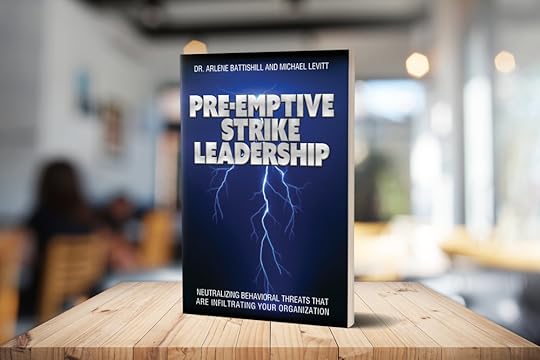
Pre-Emptive Strike Leadership: Available NOW!
A revolution is required in leadership that recognizes the time is upon us and we must respond to a workforce that is very different from the ones that have come before. True leadership will recognize the sea change and take advantage of the opportunity to transform their organizations in ways that will leave them thriving for decades to come.
The behavior that engenders the emotionally safest workplace for employees is one where the person in charge leads as a steward, rather than as an executive or manager. True leaders operate from a place of understanding human behavior and interpersonal relationships; they foster and facilitate communication and interactions that are open and welcoming. Leaders make decisions that consider the whole, and not just the pieces. Leaders model behavior that communicates to everyone that they are valued. Leaders don’t manage people; they motivate them. Leaders take a bottom-up approach instead of top-down. Leaders are not rigid or myopic and do not demand structure and compliance. Leaders take the long view and recognize that to create a culture of emotional safety is to create an organization that has the least risk, liability, cost and distraction.
So, ask yourself the question - what kind of leader are you?
Learn more at PreEmptiveStrikeConsulting.com
January 11, 2019
Pre-Emptive Strike Leadership: Dealing With Triggered Employees
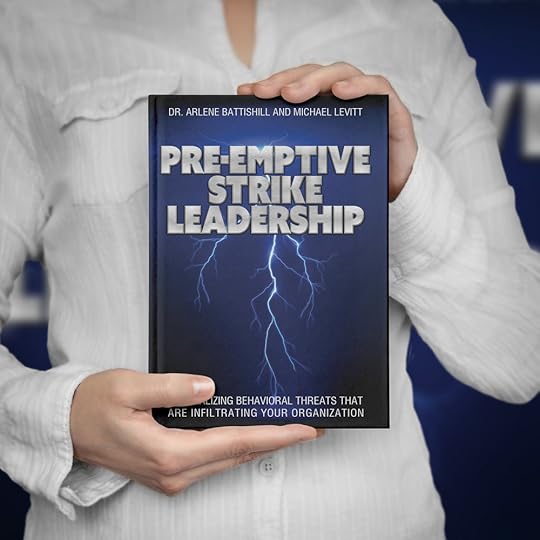
Pre-Emptive Strike Leadership: Available TODAY!
When it comes to dealing with employee behavior, organizations are still in the era of being responsive rather than being proactive. It will only be at the point where a problem with an employee surfaces that the manager or executive will take note. The manager or executive almost never spend any time in advance addressing the early indications that a problem is taking root, nor do they identify previous patterns of negative employee behavior in a department or across the organization. It is always a matter of dealing with the individual once they can no longer be ignored.
Consider that management and HR responses to negative behavior among employees are often short-sighted and lack any deep thinking or conversations with the employee about why they are behaving the way they are (because there are no resources available or structures in place that would assist them to have such conversations). Add to this the common organizational culture of dismissing problematic employees with simplistic labels such as “lazy”, “not team players”, “troublesome” or “selfish”. These are all ways of placing the blame on the flawed character of the employee who does not merit the time or resources for a deeper exploration of what may be going on. It also betrays the organization’s contempt for employees who have anything going on in their lives that might interfere with their job performance, and their willful blindness around triggers that may be coming from the organization and leadership team.
When it comes to dealing with the behavior, most organizations engage with their employees in a punitive way. Almost all organizations respond in similar ways, including:
· Management and HR meeting with the employee(s) to scold them and instruct them to stop misbehaving.
· After several verbal discussions, HR will then go to the Policies and Procedures Handbook and start “writing up” the employee for their actions.
· If the employee is still acting out, then the infamous “Performance Improvement Plan” aka “PIP” gets rolled out. (When an employee is put on a PIP, that is a red flag moment indicating that HR is setting a path to dehire the employee). Many of these PIPs have obligations and targets that even the most steadfast employee would have a hard time meeting.
Learn more at PreEmptiveStrikeConsulting.com
January 10, 2019
Pre-Emptive Strike Leadership: Window of Tolerance
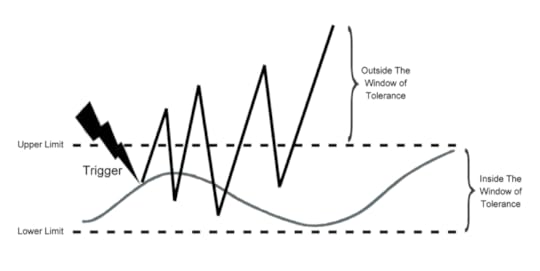
Window of Tolerance by Dr. Dan Siegel
Imagine you are in a small, tight room about the size of a closet. The only ventilation in the room is in the form of a small window that is open, filling the closet with fresh air that makes the cramped space somehow tolerable. Now, picture the window slowly closing. Imagine the way it becomes more difficult to breathe with every inch of open window you are losing. By the time the window is almost closed, the room is stifling and you are gasping for air. You might even feel yourself panicking, kind of like getting trapped in an elevator.
The longer you are in that room struggling to breathe, the more irrational you become. You’ll find you’re telling yourself stories about the danger you’re in, the loss that you’re going to experience, that no one is there to help you, that you’re completely alone with the craziness you feel inside and if you don’t get out immediately, you’re going to lose your mind. Ultimately what you’re feeling is that your very sense of survival is being threatened.
Even if someone is in that room with you, the more they talk to you in a rational way, the more you want to attack them because you’re in such a state of fear that they now become the enemy. And, as with all enemies, they must be defeated and you’ll do anything to eliminate whatever is causing the extreme distress you’re feeling.
This is the image that illustrates a person’s window of tolerance. This is where adversity and stress clash at their worst. It’s what triggers the well-known “fight or flight” reaction in an individual – meaning a person is likely to flee the situation, become confrontational, or act in a way that is detrimental to everyone around them because, for them, they feel as if they are literally fighting for their life.
Learn more at PreEmptiveStrikeConsulting.com
How Insomnia and Burnout Are Closely Related

Insomnia is something that many people suffer from on an annual basis. Sleep seems like an impossibility for some, and it has long-lasting impact on your life.
Insomnia symptoms may include: Source of list from Mayo Clinic
Difficulty falling asleep at night
Waking up during the night
Waking up too early
Not feeling well-rested after a night's sleep
Daytime tiredness or sleepiness
Irritability, depression or anxiety
Difficulty paying attention, focusing on tasks or remembering
Increased errors or accidents
Ongoing worries about sleep (so ironic. Worrying about sleep can cause you to not sleep)
The symptoms above mimic burnout conditions. When you are burned out, your brain is so focused on addressing the damage that stress and burnout is causing on your body, that your body doesn’t have the energy to rest. Let me repeat that.
Under stress and burnout, your body doesn’t have enough energy to rest.
One of the symptoms mentioned above (waking up during the night) is a huge issue in the prevention of restful sleep. An article from Practical Pain Management discusses potential causes of disturbed sleep, and introduces CBT as a possible option for treatment.
Burnout is caused by many factors, but a lack of restful sleep in your life is a huge contributor. If you can’t rest, everything will tumble like a house of playing cards.
If you’re struggling with burnout, I want to help you get your life back. Click HERE to schedule a call with me to see how we can help you recover from burnout, and live the life you want and DESERVE!
Follow me on Twitter @bfastleadership, Facebook Breakfast Leadership, and on Instagram @bfastleadership.
I help people recover from or prevent burnout in their lives. Register here for my next webinar on going from burnout to your ideal life.
My 2019 Program on Burnout Recovery Coaching is HERE!
January 9, 2019
Pre-Emptive Strike Leadership: Unpacking The Invisible Baggage of Your Employees
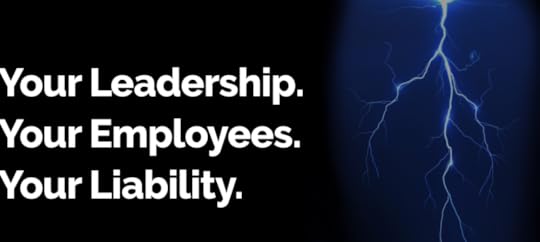
Pre-Emptive Strike Leadership: Book Available NOW
Employees carry invisible baggage through the door with them every day. Packed inside are the external stressors of life, expectations and fantasies about their job, and their history with power. The contents of this invisible baggage influence an employee’s reactions and behavior in the workplace. The contents may be invisible, but rest assured that there are a lot of visible clues to this baggage if you know what you’re looking for. Let’s start by unpacking the invisible bags.
SMUGGLING CONTRABAND PERSONAL STRESS INTO THE WORKPLACE
If you are alive, then you know that life is complicated and seems to be growing ever more so at an increasingly rapid rate. Employees have an extraordinary number of external stressors that they carry with them into the workplace on a daily basis.
The stressors that employees are experiencing fall into one of three categories: (1) trauma; (2) stress; and (3) irritation. Dealing with loved ones who are dying would fall into the trauma category. The struggles of being a single parent fall into the stress category. Dealing with rude drivers and traffic both fall into the irritation category. It can be tempting to dismiss “irritation stress”, but we all know the irritation associated with driving can actually represent a significant stress upon arriving at work.
In Melanie Gordon Sheets’ book Out-of-Control: A Dialectical Behavior Therapy (DBT) - Cognitive-Behavioral Therapy (CBT) Workbook for Getting Control of Our Emotions and Emotion-Driven Behavior, she identifies an extensive list of common stressors that are assaulting the population (this means your employees). Some items include: (For a full list, please order Pre-Emptive Strike Leadership!)
Challenges with their children
Difficult co-workers
Loved ones away at war/military service
Marital or relationship stress
Bad memories of the past
Daily hassles
Struggles of being a single parent
Stress
Inconvenience
Transportation issues (car breaks down, transit late or out of service making them late)
Stress from significant life changes
Not having enough time to accomplish what they want to do
Affording medications
Every single one of your employees is dealing with multiple stressors EVERY DAY. It is their inescapable reality and, according to research, the less power and financial security one has, the greater the impact of each of these stressors.
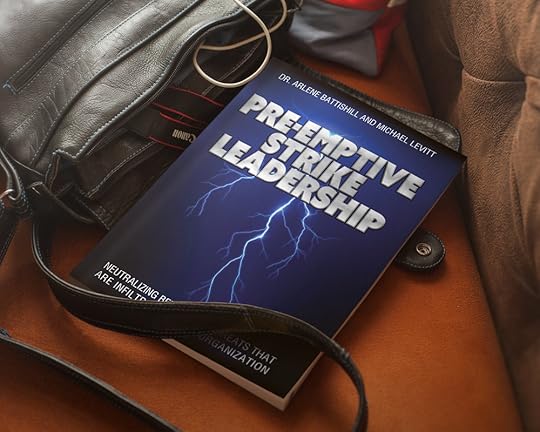
Pre-Emptive Strike Leadership. Order TODAY!
Stress in your employees’ personal lives is very real, complicated and playing out in myriad ways in their workplace, made all the more volatile because it must remain hidden. The higher the stress, the higher the stakes. If the workplace environment is one that invalidates personal stress or emphasizes to employees that there’s no place for it at work, employees are much more likely to overreact to authority, nurse grudges, generate divisive environments, and look for outlets to release the building pressure.
Learn more at PreEmptiveStrikeConsulting.com
January 8, 2019
Pre-Emptive Strike Leadership: The Threat Inside Your Walls

Pre-Emptive Strike Leadership: Available today!
In this changing landscape of almost infinite channels of communication flow, a hunger for salacious news over facts, and the merging of personal/public/professional lives, the risks that employees represent to their organizations can rise to astronomical levels when accounting for liability, cost and distraction. Situations such as former employees using social media to throw organizations into the spotlight (or “under the bus”), compromising the brand and the profitability of the organization, not to mention the longevity and legacy of the founders, executives and managers.
Let us be clear: employees are not inherently your enemy. However, they do represent a very real threat that, if mishandled, can turn your employee into someone who behaves very much like the enemy. The problem is, when organizational leaders are identifying risk, there is an obsession with scanning the horizon for danger while failing to look over their shoulders at their own troops. If you wish to neutralize threats to your organization, you must possess the courage to look within your walls and learn the leadership skills to develop and deploy a targeted pre-emptive strike before it’s too late.
When most organizations analyze risk they focus primarily on threats that are clearly definable, quantifiable and measurable, and most always associated with external factors. The nature of these threats usually include economic, natural, legal, political and financial forces. Here are some examples of common “external threats” for different types of organizations (see if any of them look familiar):
Organizations are typically focused on market fluctuations; competition and consolidation; changes to federal, state and local regulations; mergers and acquisitions or divestitures; international operations; new products and services development; intellectual property infringement; economic conditions; attracting or retaining personnel; pricing pressures; margins; cost cutting; legal proceedings; cyclical revenue; product liability; quality and safety issues; supplier and vendor concerns; inability to acquire capital or financing; and predicting customer demand.

When was the last time you thought about the Trojan Horse? You know, the one that the Greeks left for the Trojans following ten years of battle? The Greeks, appearing to give up, sailed off into the distance and the Trojans gleefully rolled that big prized horse inside their gates. We all know how that turned out. The Trojans lowered their guard, went about their business, and out of the horse came the rest of the Greek army, who could now level the city of Troy from the inside out!
You ever hear that story and wonder, “How could they not have guessed that horse was packed full of danger? Why didn’t they at least examine it a bit more closely?. Seems kinda obvious, doesn’t it? Well, consider this…each of your employees has the potential to be a Trojan Horse inside the gates of your organization. All the baggage they carry with them is inside that horse, waiting to emerge and take you down the moment you stop paying attention.
Learn how to assess your organization’s risk by visiting Pre-Emptive Strike Consulting (Pre-EmptiveStrikeConsulting.com)
2019

Source of image: Inc. Magazine
The last month of 2018 was “interesting.”
I had taken quite the sabbatical from working, so I could unwind, reflect on the year that was ending, and prepare for what Drew Hagus is calling a Weird and Wild 2019.
I pretty much stopped looking at emails (other than mission critical emails regarding the new book), and was amazed about how MANY emails I get in a short period of time.
I also took a break for the most part from Social Media. This forced me to stop looking at the iBinky 24/7 and not checking Facebook/Instagram/Twitter all the time.
Followers still saw posts, due to my online scheduling tool, that posted without me. Subcontracting is fun, kids!
I read some books. Quite a few. All highly recommended.
Opportunity by Eben Pagan. I’ve had this book to finish for MONTHS. Irritated with myself for not finishing it sooner. Great eye-opening book for entrepreneurs.
Disease To Please by Harriet Braiker. Hi, my name is Michael and I’m a people pleaser. “Hi, Michael.” This book shook me and has changed me for the better.
The Secret by Rhonda Byrne. I’ve had this book to read on my Kindle for a long time. Watched the movie on Netflix during the holidays, so read the book in one day. Life changing.
Business Evolves, Leadership Endures by Andrea Redmond and Charles Tribbett III Disclaimer: I used to work for Andrea and Charles, when I worked at Russell Reynolds in Chicago in the late 90s. Damn I’m getting older. This book is a timeless example on leadership, and I particularly was impressed on the chapter about leaders with heart. Timely.
I planned on December being a quiet month for reflection and rest. I had no idea on the insights it would provide, and I’m so thankful for the authors of the books that made me grow as a person.
2019 will be a weird and wild year for all of us. Enjoy the ride!
If you’re struggling with burnout, I want to help you get your life back. Click HERE to schedule a call with me to see how we can help you recover from burnout, and live the life you want and DESERVE!
Follow me on Twitter @bfastleadership, Facebook Breakfast Leadership, and on Instagram @bfastleadership.
I help people recover from or prevent burnout in their lives. Register here for my next webinar on going from burnout to your ideal life.
My 2019 Program on Burnout Recovery Coaching is HERE!
December 19, 2018
How I Am Finishing The Year Strong

Often we hear the advice "Finish the year STRONG." Many of us think this means hustle, try to close some sales before the holidays hit, crush it, etc.
My interpretation of finishing the year strong is to be rested, renewed, restore your energy, so that the next year will be the most impactful year of your life.
Because of boundaries and self-love for myself, I am not checking or responding to emails from December 22, 2018, until January 7, 2019.
I’ll also be taking a break from Social Media during this time. Imagine how long the battery life on my iBinky will last now, lol.
I recommend you do the same in your respective lives. Instead of having fear of missing out (FOMO), take this season and celebrate the joy of missing out (JOMO).
I recognized within myself that when you are an entrepreneur and also work in a full-time role, days are long. It’s been an amazingly productive year for me, and I am thankful that I have the skills and desire to do what I do.
I also (thankfully) realized that I could become burned out if I didn’t take a rock-solid break from work.
2019 is going to be an amazing year for all of us. Let’s enter into next year with renewed energy, vigor, and determination to be our best selves.
Be well, and all the best this holiday season!
If you’re struggling with burnout, I want to help you get your life back. Click HERE to schedule a call with me to see how we can help you recover from burnout, and live the life you want and DESERVE!
Follow me on Twitter @bfastleadership, Facebook Breakfast Leadership, and on Instagram @bfastleadership.
I help people recover from or prevent burnout in their lives. Register here for my next webinar on going from burnout to your ideal life.
My 2019 Program on Burnout Recovery Coaching is HERE!



